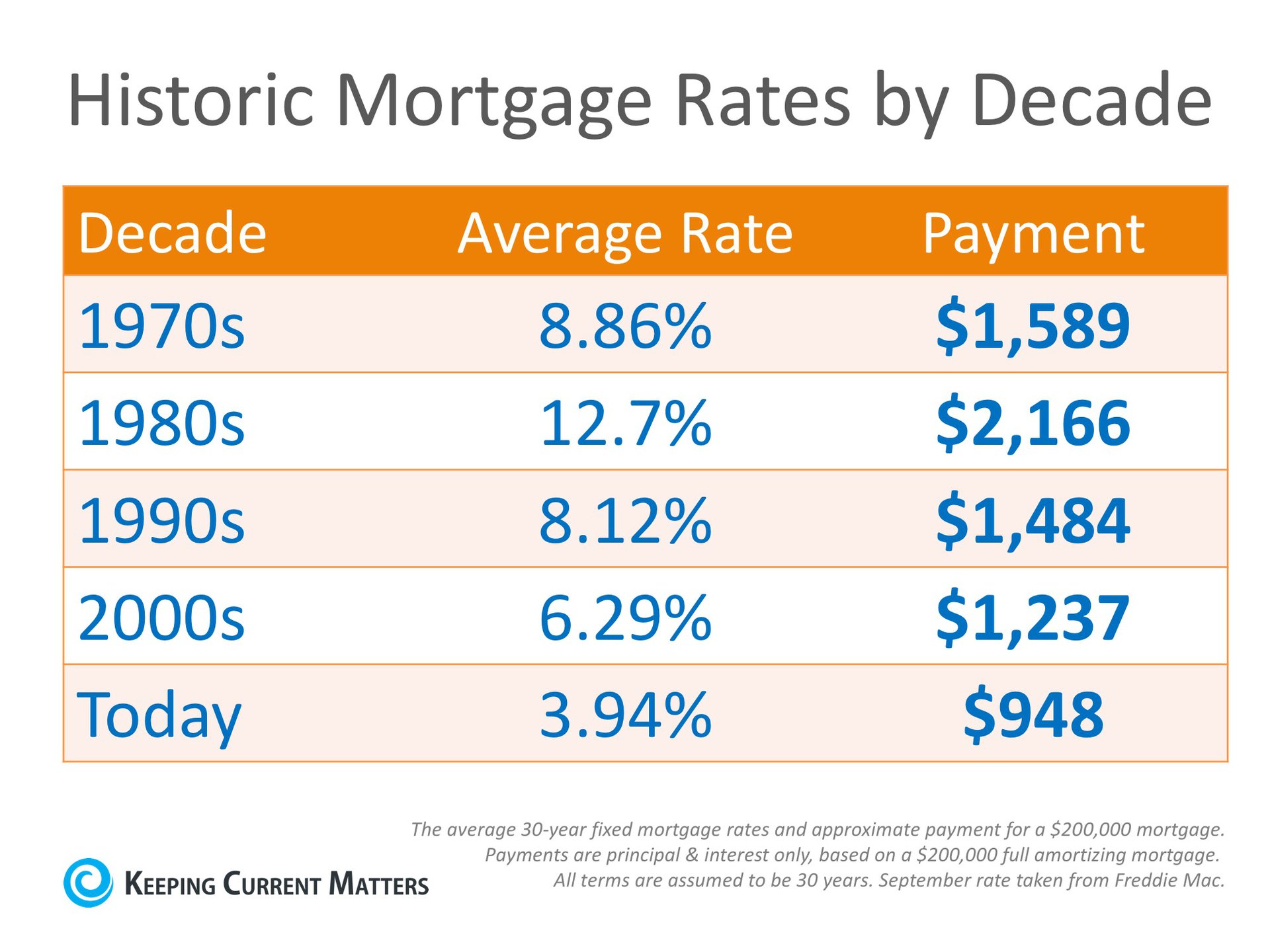Source: Keeping Current Matters | The KCM Crew 120216
Friday, December 2, 2016
Wednesday, November 30, 2016
Is Getting a Home Mortgage Still Too Difficult?

There is no doubt that mortgage credit availability is expanding, meaning it is easier to finance a home today than it was last year. However, the mortgage market is still much tighter than it was prior to the housing boom and bust experienced between 2003 - 2006.
The Housing Financing Policy Center at the Urban Institute just released data revealing two reasons for the current exceptionally high credit standards:
- Additional restrictions lenders put on borrowing because of concerns that they will be forced to repurchase failed loans from the government-sponsored enterprises or Federal Housing Administration (FHA).
- The concern about potential litigation for imperfect loans.
What has been the result of these concerns?
6.3 Million Less Mortgages
The Policy Center report went on to say:
“It was so hard to get a mortgage in 2015 that lenders failed to make about 1.1 million mortgages that they would have made if reasonable lending standards had been in place. From 2009 to 2014, lenders failed to make about 5.2 million mortgages thanks to overly tight credit. In total, lenders would have issued 6.3 million additional mortgages between 2009 and 2015 if lending standards had been more reasonable.”
In an interview with DSNews, Laurie Goodman and Alanna McCargo of the Policy Center further explained:
“Our Housing Credit Availability Index (HCAI)* measures the probability that mortgage borrowers will become delinquent on that mortgage for 90 or more days, which we refer to as the default risk. This measure indicates that the probability of default rose from 12 percent in 2001 to a peak of 16.5 percent at the end of 2005/beginning of 2006, before declining to the current level of 5 percent. Stated differently, lenders are currently taking less than half the credit risk they were taking in 2001, a period of reasonable credit standards.”
The cost to the economy if we’re writing fewer loans…
Goodman and McCargo put it best:
“…fewer households will become homeowners at exactly the point in the economic cycle when it is most advantageous to do so… [They] will continue to miss this wealth-building opportunity. The median family wealth for homeowners is $195,400, with their home the most valuable asset for most; the median family wealth for renters is $5,400… Fewer potential homebuyers means the housing market will continue to recover more slowly. At the same time, fewer buyers create a strain on other benefits to the economy which homebuying brings such as spending on home goods and an increase in construction jobs.”
Bottom Line
The housing market boom and bust caused many mortgage providers and lenders to tighten their lending standards in an effort not to repeat the recent past. This paired with many homebuyers disqualifying themselves before they even apply for a loan, due to the fear of rejection, has led to many households not yet becoming homeowners.
*The HCAI measures the percentage of home purchase loans that are likely to default—that is, go unpaid for more than 90 days past their due date. A lower HCAI indicates that lenders are unwilling to tolerate defaults and are imposing tighter lending standards, making it harder to get a loan. A higher HCAI indicates that lenders are willing to tolerate defaults and are taking more risks, making it easier to get a loan.
Source: Keeping Current Matters | The KCM Crew 11302016
Wednesday, November 23, 2016
Thinking of Selling? Don’t Overlook an Outdated Kitchen, Buyers Won’t

If you are planning on listing your home for sale, make sure that you don’t overlook the condition of your kitchen. A recent article on realtor.com listed “7 Signs Your Kitchen Is Way Overdue for a Renovation,” in which they warned:
“Dated kitchens—just like bathrooms—are a major barrier for resale. Buyers want modern amenities and styling, and most aren’t interested in renovating post-purchase.”
Kitchen remodels can be pricey, with many complete remodels costing $20,000 or more. But not every kitchen needs a full remodel. There are many smaller projects that will help buyers see themselves trying their favorite Pinterest recipe in your home!
Here are a couple of project ideas that, if you’re handy or know someone who is, could end up boosting your home’s value without breaking the bank:
- Are the cabinets in good shape but need an update? A new coat of paint and some updated hardware will instantly freshen up the space and drastically change the feel of the room all for under $300.
- A new backsplash to match the freshly painted cabinets updates the space and adds some style while staying under $200, depending on the size of the room.
- If the kitchen seems dark, consider adding LED under cabinet lighting for around $40.
- If replacing the countertops in the kitchen isn’t within your budget, consider using a top coat to cover the current countertops.
If you decide to complete a full remodel of your outdated kitchen, you can expect a 67% return on a $30,000 upgrade (the national median cost). The benefits of a kitchen remodel aren’t purely financial, according to Houselogic:
“Eighty-two percent of homeowners said their updated kitchen gave them a greater desire to be at home, and 95% were happy or satisfied with the result.”
Bottom Line
Kitchens and bathrooms are often make or break for buyers when touring a home or searching through photo galleries online. Consult a local real estate professional who can help you identify which small projects could pay off big!
Source: Keeping Current Matters | The KCM Crew 112316
Tuesday, November 22, 2016
Why Are Mortgage Interest Rates Increasing?

According to Freddie Mac’s latest Primary Mortgage Market Survey, the 30-year fixed rate mortgage interest rate jumped up to 3.94% last week. Interest rates had been hovering around 3.5% since June, and many are wondering why there has been such a significant increase so quickly.
Why did rates go up?
Whenever there is a presidential election, there is uncertainty in the markets as to who will win. One way that this is noticeable is through the actions of investors. As we get closer to the first Tuesday of November, many investors pull their funds from the more volatile and less predictive stock market and instead, choose to invest in Treasury Bonds.
When this happens, the interest rate on Treasury Bonds does not have to be as high to entice investors to buy them, so interest rates go down. Once the elections are over and a President has been elected, investors return to the stock market and other investments, leaving the Treasury to raise rates to make bonds more attractive again.
Simply put, the better the economy, the higher interest rates will go. For a more detailed explanation of the many factors that contribute to whether interest rates go up or down, you can follow this link to Investopedia.
The Good News
Even though rates are closer to 4% than they have been in nearly 6 months, they are still slightly below where we started 2016, at 3.97%.
The great news is that even at 4%, rates are still significantly lower than they have been over the last 4 decades, as you can see in the chart below.
Any increase in interest rate will impact your monthly housing costs when you secure a mortgage to buy your home. A recent Wall Street Journal article points out that, “While still only roughly half the average over the past 45 years, according to Freddie Mac, the quick rise has lenders worried that home loans could become more expensive far sooner than anticipated.”
Tom Simons, a Senior Economist at Jefferies LLC, touched on another possible outcome for higher rates:
“First-time buyers look at the monthly total, at what they can afford, so if the mortgage is eaten up by a higher interest expense then there’s less left over for price, for the principal. Buyers will be shopping in a lower price bracket; thus demand could shift a bit.”
Bottom Line
Interest rates are impacted by many factors, and even though they have increased recently, rates would have to reach 9.1% for renting to be cheaper than buying. Rates haven’t been that high since January of 1995, according to Freddie Mac.
Source: Keeping Current Matters | The KCM Crew |112216
Tuesday, October 18, 2016
How Historically Low Interest Rates Increase Your Purchasing Power
According to Freddie Mac’s latest Primary Mortgage Market Survey, interest rates for a 30-year fixed rate mortgage are currently at 3.47%. Rates have remained at or below 3.5% each of the last 16 weeks, marking a historic low. The interest rate you secure when buying a home not only greatly impacts your monthly housing costs, but also impacts your purchasing power. Purchasing power, simply put, is the amount of home you can afford buy for the budget you have available to spend. As rates increase, the price of the house you can afford will decrease if you plan to stay within a certain monthly housing budget. The chart below shows what impact rising interest rates would have if you planned to purchase a home within the national median price range, and planned to keep your principal and interest payments at or about $1,100 a month.
With each quarter of a percent increase in interest rate, the value of the home you can afford decreases by 2.5%, (in this example, $6,250). Experts predict that mortgage rates will be closer to 4% by this time next year. Act now to get the most house for your hard earned money.
Source: Keeping Current Matters | The KCM Crew
Monday, October 3, 2016
Think You Should FSBO? 5 Reasons to Think Again!

In today’s market, with home prices rising and a lack of inventory, some homeowners may consider trying to sell their home on their own, known in the industry as a For Sale by Owner (FSBO). There are several reasons why this might not be a good idea for the vast majority of sellers.
Here are the top five reasons:
1. Exposure to Prospective Buyers
Recent studies have shown that 88% of buyers search online for a home. That is in comparison to only 21% looking at print newspaper ads. Most real estate agents have an internet strategy to promote the sale of your home. Do you?
2. Results Come from the Internet
Where did buyers find the home they actually purchased?
- 44% on the internet
- 33% from a Real Estate Agent
- 9% from a yard sign
- 1% from newspapers
The days of selling your house by just putting up a sign and putting it in the paper are long gone. Having a strong internet strategy is crucial.
3. There Are Too Many People to Negotiate With
Here is a list of some of the people with whom you must be prepared to negotiate if you decide to For Sale By Owner:
- The buyer who wants the best deal possible
- The buyer’s agent who solely represents the best interest of the buyer
- The buyer’s attorney (in some parts of the country)
- The home inspection companies, which work for the buyer and will almost always find some problems with the house
- The appraiser if there is a question of value
4. FSBOing Has Become More And More Difficult
The paperwork involved in selling and buying a home has increased dramatically as industry disclosures and regulations have become mandatory. This is one of the reasons that the percentage of people FSBOing has dropped from 19% to 8% over the last 20+ years.
The 8% share represents the lowest recorded figure since NAR began collecting data in 1981.
5. You Net More Money When Using an Agent
Many homeowners believe that they will save the real estate commission by selling on their own. Realize that the main reason buyers look at FSBOs is because they also believe they can save the real estate agent’s commission. The seller and buyer can’t both save the commission.
Studies have shown that the typical house sold by the homeowner sells for $210,000, while the typical house sold by an agent sells for $249,000. This doesn’t mean that an agent can get $39,000 more for your home, as studies have shown that people are more likely to FSBO in markets with lower price points. However, it does show that selling on your own might not make sense.
Bottom Line
Before you decide to take on the challenges of selling your house on your own, sit with a real estate professional in your marketplace and see what they have to offer.
Source: Keeping Current Matters | The KCM Crew 10042016
Thursday, September 29, 2016
7 SIMPLE & SMART BASEMENT REPAIRS TO CONSIDER
No space in your home is more accommodating and homey, or conversely scary, than your basement. A nicely finished basement can be the entertainment centerpiece of your entire home, housing your big-screen TV, the most comfortable couches in the place and a warm, inviting atmosphere that wraps each guest in comfort.
But, if your basement is unfinished or has other lingering issues, it can be a downright scary place to spend any amount of time. Here are a few simple tips to help you fix your basement:
#1 Gutter Extensions
Believe it or not, one of the easiest and smartest things you can do to fix your basement takes place outside. By adding extensions to your gutters' downspouts, you can avoid a lot of the issues that commonly plague basements, from foundation issues to leaking walls, mold and mildew buildup. Gutter extensions carry water away from the foundation of your house, helping to prevent seepage and long-term damage from soil erosion. Average gutter extensions cost no more than $10 per foot.
#2 Outer Foundation Work
There are two big steps you can take on the outside of your home that will protect your basement and improve your foundation. Your home ideally sits on a crown of soil that slopes six inches over the first 10 feet in all directions away from your foundation. If the soil around your foundation has settled, build it back up with a shovel and some dirt to ensure water does not build up against the foundation wall.
Second, reshape your landscape by creating a berm beyond the eaves of your home. This will prevent rot, termites and water from getting too close to your foundation. The minimum suggested distance for a dirt berm is six inches away from your home's foundation. You can complete both of these steps in a weekend and help prevent water from pooling against your foundation and leaking into your basement.
#3 Plug Visible Gaps
A number of pipes and vents have to exit the basement of your home through the foundation walls. Examples include the water pipes leading to outdoor faucets, bathroom fan vents and dryer vents. The holes drilled into the foundation to allow for pipes and vents to escape can lead to water issues in your basement through seepage and general rain intrusion. You can easily seal these cracks and holes yourself by using hydraulic cement or polyurethane caulk, both of which retail for about $20.
#4 Repair Leaky Pipes
Insulate any pipes collecting condensation. Insulation will prevent the buildup of condensation on the outside of pipes carrying hot water in the winter months and cold water in the summer months.
Always call a plumber to tackle larger jobs like major leaks or cracks. Many times these pipes run to other parts of your home and require a professional to properly address the problem.
#5 Insulate Your Walls
You can also prevent foundation damage by insulating your walls. As the environment inside your home heats and cools, condensation can build up on exposed foundation walls.
As the condensation builds over time, cold water can expand and crack your foundation, while warm water in the summer can lead to mold and mildew. Insulating your walls establishes a barrier between the internal environment of your home and the temperature outside.
#6 Install Drywall
If you want to improve your basement further, consider installing drywall over the insulation. This can help to dampen the temperature swings in your basement, holding in cool air in the summer and warm air in the winter.
#7 Window Repairs and Replacement
Basement windows are another source of leaks in your basement. Replace your old, faulty weather stripping or apply a polyurethane caulk around the edges to insulate your window frames. For windows that are outdated, upgrading to energy efficient windows will drastically improve the conditions in your basement and prevent seepage of both air and water.
Conclusion
There are many smart, simple ways to fix up your basement in order to create a safe, enjoyable space for friends and family.
Source: Realty Times | Andrea Davis | 09302016
Subscribe to:
Posts (Atom)


